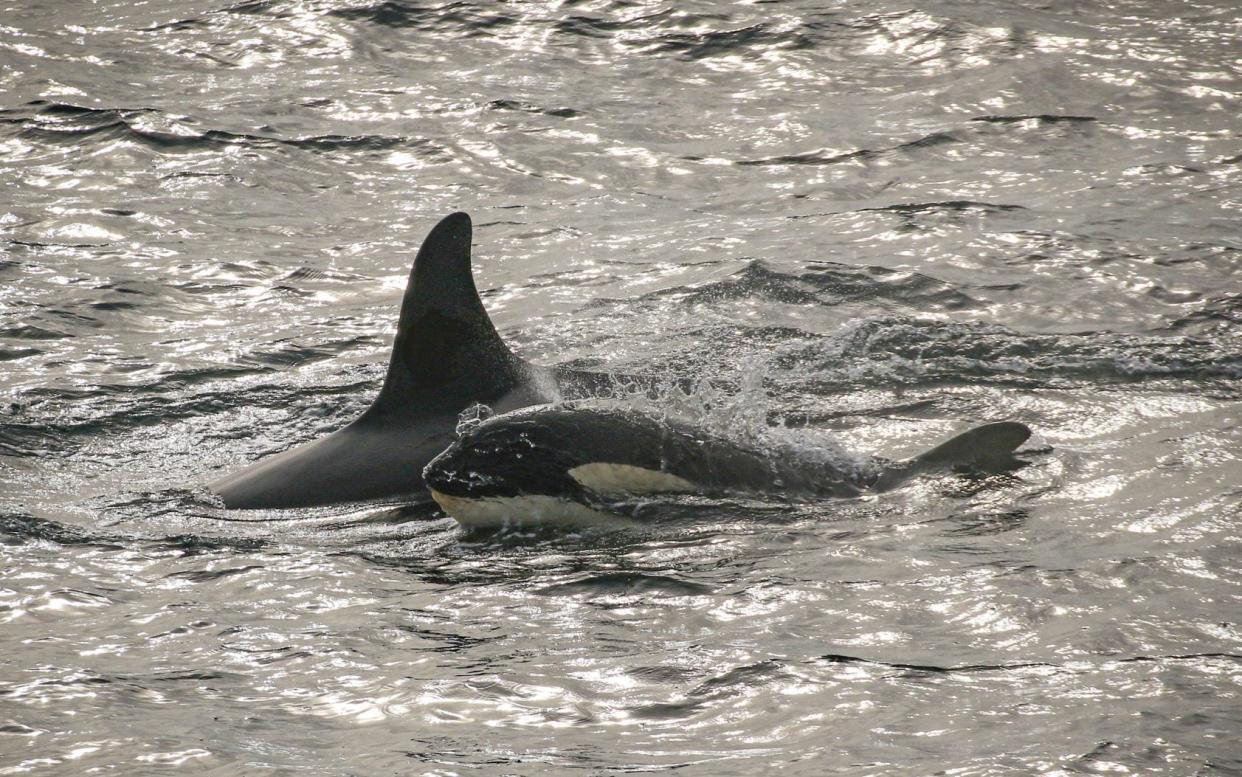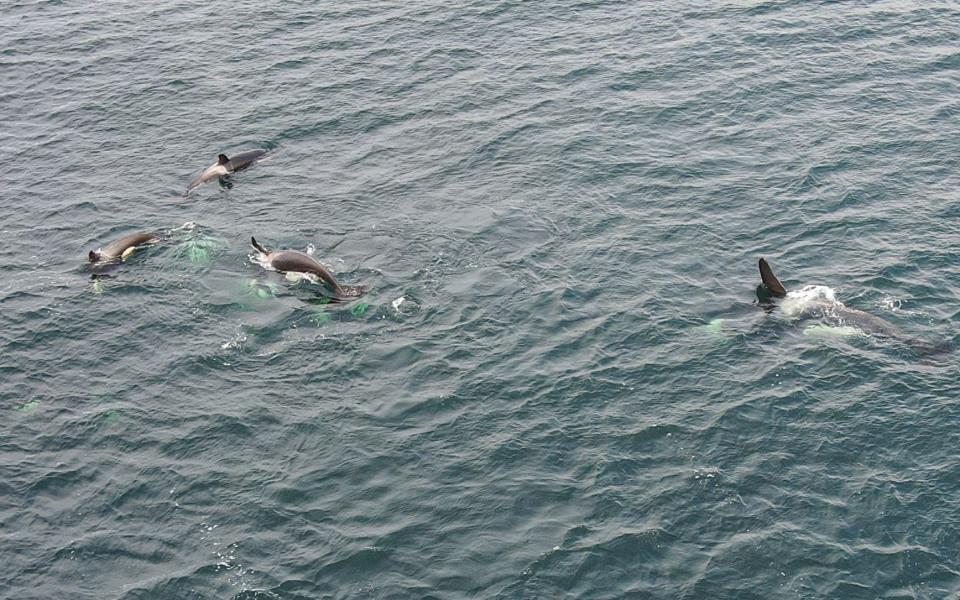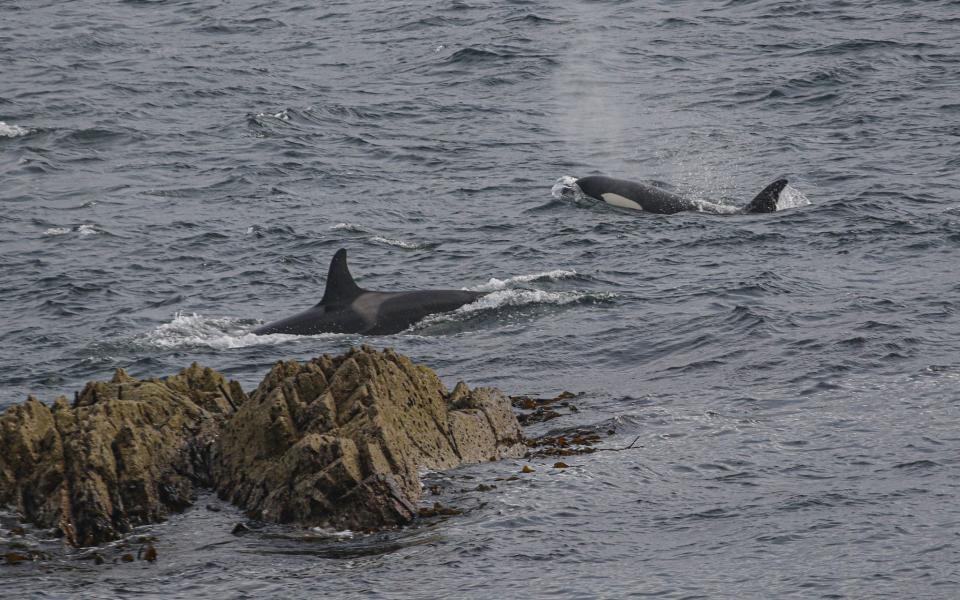The ‘killers’ off our coast: Three new pods of Orcas are feasting on the seals of Scotland

The average Briton’s closest encounter with an orca might once have been through the film Free Willy.
But the majestic killer whale is increasingly being spotted in the UK, with a major citizen science project identifying three new “pods” that are present near the north coast of Scotland year-round.
The orcas are thought to be living off the area’s healthy seal population, with a Scottish government study launched to examine their diets and movement patterns.
PhD student Julia Sutherland, of the University of St Andrews, began her work last September and will spend four years examining the orcas’ habits.
Thousands of people have joined efforts to report sightings of the orcas, which have now been individually identified and catalogued by local naturalists, scientists and enthusiasts.
“There's a very strong network up in Shetland, Orkney and the north coast of Scotland, of what we call citizen scientists, that regularly monitor these killer whales.
“They collect photos, they collect drone footage. And through them, we learned that actually, there are far more killer whale pods present around the north coast of Scotland and Northern Isles than previously thought,” she said.

Are orcas are having an impact on declining harbour seals in Britain?
The research, carried out alongside public bodies NatureScot and Marine Scotland, will aim to establish whether the orcas are having an impact on Britain’s harbour seals, a population that has been declining in recent years.
Though they are commonly known as killer whales, orcas are actually the largest member of the dolphin family.
Local experts think a growing number of sightings is due to public enthusiasm and sharing of information on social media including Facebook groups.
The three pods are in addition to a separate group, often described as the UK’s only resident pod of orcas, known as the “west coast community”.
This group ranges widely around the UK and Irish coastline and last week were spotted from Cornwall, the furthest south they have ever been seen.
Once comprising up to 14 animals, just two in the group are now seen regularly, males known as John Coe and Aquarius.
Banned in 1981, PCB chemicals are still affecting orcas and seals
Mammals including orcas and seals are particularly badly affected by PCBs, a group of toxic chemicals once widely used in industry but banned in 1981.
Despite no longer being manufactured they do not easily break down in the environment and marine mammals still accumulate vast amounts in their blubber, causing infertility and weaker immune systems, something that is believed to have contributed to this group’s decline.
Photographer and naturalist Hugh Harrop, of local company Shetland Wildlife, said that the idea that the UK had just one resident pod was incorrect.
“We can now identify that some of the pods in Scotland are indeed resident or semi-resident.
“It was once thought that the West Coast community, the famous John Coe and Aquarius clan, were the only resident killer whales in Scottish waters.

“They are still quoted as being the only residents in Scottish waters, but they're not. We've now got three pods that we refer to as a Northern Isles community.
“The only word I would really use from a natural history point of view is 'encouraging’”, he said.
A report released in February by a group of local naturalists catalogues the orcas resident or semi-resident in Scottish waters, arguing that the seas “appear to be home to more than one population of killer whales”.
‘Northern Isles Community’ consists of three pods thought to comprise 18 animals
The “Northern Isles Community” consists of three pods, Mr Harrop said, thought to comprise 18 animals in total.
One of these, a group of eight known as the “27s”, was spotted and photographed on Monday hunting seals around Orkney by local photographer Graham Campbell.
Northern Scotland is also frequented by other pods who move between Iceland, where they are believed to live mostly on herring, and other areas of the Atlantic.
Local orca watcher Karen Munro, who co-authored the report, said the groups had also been seen with Icelandic pods.
“May is the peak season for seeing them on the north coast, and going into the Moray Firth, and we have also documented the northern isles group coming together with Icelandic animals,” she said.

